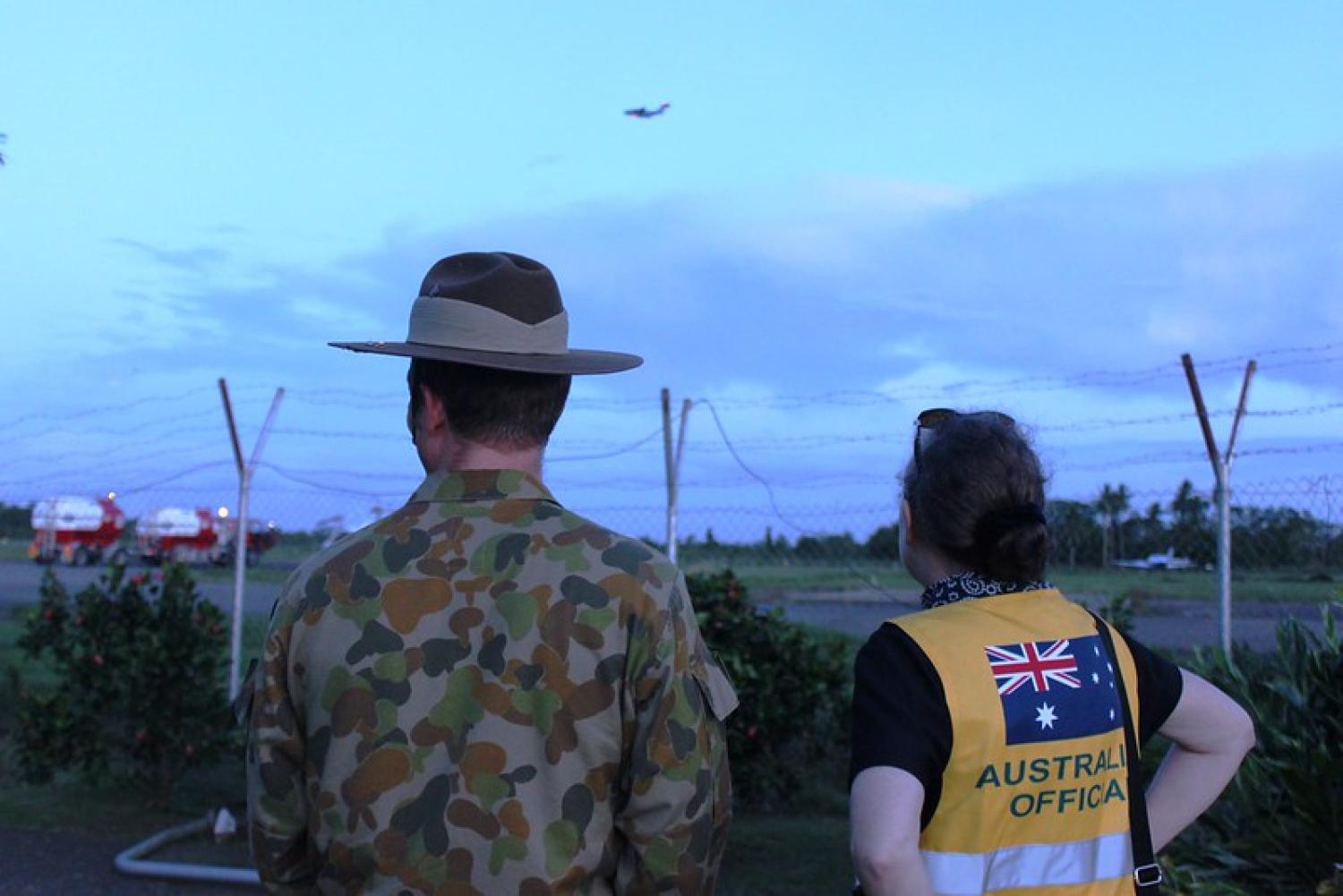On a day that was supposed to be all about defence, Australia’s diplomats got some good news.
The Defence Strategic Review released today includes a full chapter on the need for a whole-of-government and whole-of-nation approach – and explicitly recommends appropriately resourcing the Department of Foreign Affairs and Trade (DFAT) to lead this role.
It is a watershed moment for a major defence planning document to recommend more funding and a greater mandate for DFAT.
In recent times there has been increasing discussion of an “all tools of statecraft” approach which recognises that investment in military hardware should not be the only way that Australia thinks about its security. A recent paper by Asia-Pacific Development, Defence & Diplomacy Dialogue (AP4D) outlined the range of instruments through which Australia can generate international effects and discussed why the many different tools – including development and diplomacy – need to be respected and properly resourced. This area is receiving increasing bipartisan support.
This outlook is strongly evident in the Defence Strategic Review.
In his introduction, Minister for Defence Richard Marles says Australia’s interests demand “we deploy all elements of our national power in statecraft seeking to shape a region that is open, stable and prosperous” and notes this “statecraft includes deepening diplomatic engagement with the many other countries facing similar circumstances”. This is reminiscent of his comment that “We should never forget that Australia’s frontline is diplomacy.”
In their one page introduction, review authors Sir Angus Houston and Stephen Smith particularly note that the challenges they identify “will require a whole-of-government and whole-of-nation effort.” The Review is clear that security is not something that Defence can achieve alone.
“National Defence must be part of a broader national strategy of whole-of-government coordinated and focused statecraft and diplomacy in our region. This approach requires much more active Australian statecraft that works to support the maintenance of a regional balance of power in the Indo-Pacific.”
Marles' statement that “Australia’s foreign policy works with defence policy as essential and interdependent parts of how we make Australia stronger and more influential in the world” chimes with Minister for Foreign Affairs Penny Wong’s speech to the National Press Club last week. Both ministers reinforced the message that both are essential, both interdependent.
Reading the review, there are a number of “all tools” concepts, including the need for “coherence”, “a unifying national strategic approach” and “a national strategy and unity of effort to Australian statecraft.” The authors say that one way of judging the effect of the review is by its impact on “national leadership, statecraft and diplomatic proficiency”.
So what effects can we expect?
First, the review recommends that DFAT should be “appropriately resourced to lead a nationally determined and strategically directed whole-of-government statecraft effort in the Indo-Pacific.” The Government response agrees with this. Whether this is implemented in the coming budget or the next, it should mean a welcome increase to DFAT capability, whether in its policy planning branch, through a taskforce or in some other way.
The review is clear that achieving its vision of National Defence requires “the reversal of a long-term reduction in diplomatic resources, increasing our diplomatic efforts in areas of core national interest. Our diplomatic capability must be resourced, directed and focused.”
Second, the Defence Strategic Review should give greater impetus to coordination efforts. One of government’s six immediate actions in response to the review is “deepening our diplomatic and defence partnerships with key partners in the Indo-Pacific”. This is inevitably a shared role with DFAT.
In the words of the review: “To maximise efforts, Australia must take a more focused and strategic approach. This means greater coordination between DFAT, Defence and other key government entities.” Unlike the 2020 Defence Strategic Update, which gave defence the role of “shaping” the international environment, building partnership is now conceived of as a joint task.
This will require a focus on building structures and collaboration methods. It will require personnel in international policy and national security agencies to develop the “intercultural capability” to understand the priorities, strengths and ways of working with other bureaucratic actors. This also extends to personnel in domestic agencies, with the review recommending “the harmonisation of a range of domestic and external national security portfolios, from trade and investment to education, minerals and resources, clean energy, climate, industry, infrastructure and more.”
Finally, the review’s whole-of-nation approach will demand much of DFAT and Defence in terms of a concerted effort to achieve wide buy-in on international policy through building a coherent narrative and gathering public support. In the words of the review, “Statecraft also requires the utilisation of all elements of national power, the alignment of all supporting government policy, economic resilience and a consistent strategic narrative.” This will require a long-term, consistent effort at the political and bureaucratic level to build understanding of Australia’s international policy.
In framing defence within a broader national strategy that harnesses all elements of national power to protect Australia’s strategic interests, the Defence Strategic Review shows a dramatically different approach to past documents, which were more likely to treat defence as a silo. The review doesn’t imply that defence is the apex: Defence’s role is defined as “critical”, but not exclusive.
By framing diplomacy as equally crucial to Australia’s security, the review has moved debate into a new era by advocating for more resources to DFAT and a focus on a whole-of-government and whole-of-nation approach. Overall, the vision is of a “much more active Australian statecraft that works to support the maintenance of a regional balance of power in the Indo-Pacific. This requires deepening diplomatic engagement and stronger defence capabilities to help deter coercion and lower the risk of conflict.”

